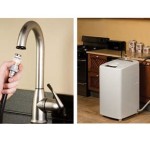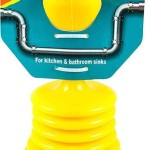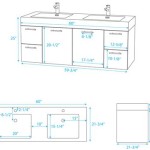Portable 3 Compartment Sink: A Necessity for Food Truck Operations
A portable 3 compartment sink is a crucial piece of equipment for any food truck operation. It plays a vital role in maintaining hygiene, adhering to food safety regulations, and ensuring smooth operations. These sinks are designed to be compact, mobile, and efficient, offering a self-contained solution for washing, rinsing, and sanitizing dishes, utensils, and equipment in a limited space.
The importance of a portable 3 compartment sink extends beyond simple cleanliness. It directly impacts customer health, business reputation, and legal compliance. This article delves into the various aspects of portable 3 compartment sinks for food trucks, covering their features, benefits, selection criteria, and maintenance.
Understanding the Functionality of a 3 Compartment Sink
The standard 3 compartment sink system is based on a multi-stage cleaning process designed to effectively remove food particles and contaminants from surfaces. Each compartment serves a specific purpose, ensuring a thorough and sanitary cleaning procedure.
The first compartment is designated for washing. This is where items are initially scrubbed using hot, soapy water to remove visible food debris. The temperature of the water is a critical factor, as it helps to loosen and dissolve grease and food particles. Following the wash, items are moved to the second compartment for rinsing. This compartment uses clean, hot water to remove any remaining soap residue. The final compartment is used for sanitizing. This is typically done using a chemical sanitizer solution, which kills any remaining bacteria or microorganisms. The items are then air-dried on a clean surface.
This three-step process is crucial for preventing the spread of foodborne illnesses and maintaining a safe food handling environment. The separation of tasks ensures that items are not simply re-contaminated during the cleaning process.
Portable 3 compartment sinks designed for food trucks often incorporate features that enhance their functionality within a mobile setting. These features may include built-in water heaters, pumps for water delivery, and wastewater storage tanks. The compact design and portability of these sinks allow food truck operators to comply with health regulations without sacrificing valuable space.
Key Benefits of Using a Portable 3 Compartment Sink in a Food Truck
The integration of a portable 3 compartment sink into a food truck operation offers numerous benefits that contribute to the overall success and safety of the business.
Compliance with health regulations is one of the most significant advantages. Food trucks are subject to strict health codes that mandate proper dishwashing and sanitization procedures. A portable 3 compartment sink allows operators to meet these requirements without relying on external facilities. This can prevent fines, closures, and other legal repercussions.
Improved hygiene and food safety are directly linked to the use of a 3 compartment sink. By providing a dedicated space for washing, rinsing, and sanitizing, these sinks minimize the risk of cross-contamination and the spread of foodborne illnesses. This is crucial for protecting customers and building a positive reputation.
Operational efficiency is also enhanced by the presence of a portable 3 compartment sink. Having on-site dishwashing capabilities reduces the need for frequent trips to external facilities, saving time and resources. This allows food truck staff to focus on food preparation and customer service, ultimately improving productivity.
Enhanced self-sufficiency is another key benefit. With a portable sink, food trucks can operate in a wider range of locations, including those without readily available water and wastewater connections. This increases flexibility and allows operators to tap into new markets and opportunities.
Factors to Consider When Choosing a Portable 3 Compartment Sink
Selecting the right portable 3 compartment sink for a food truck involves careful consideration of several factors. These include size and capacity, water supply and drainage, material and construction, and compliance with local regulations.
Size and capacity are important considerations, as the sink must fit within the limited space of the food truck while providing adequate room for washing, rinsing, and sanitizing. The dimensions of the sink should be carefully measured to ensure it can be easily maneuvered and installed. The capacity of each compartment should also be sufficient to accommodate the volume of dishes and utensils used during peak operating hours.
Water supply and drainage are crucial aspects to consider. The sink must have a reliable water supply, either through a connection to a potable water source or through a built-in water tank. The drainage system must also be efficient and comply with local regulations regarding wastewater disposal. Some portable sinks include integrated water heaters and pumps to ensure a consistent supply of hot water.
Material and construction play a significant role in the durability and longevity of the sink. Stainless steel is a common choice due to its resistance to corrosion, ease of cleaning, and hygienic properties. The construction should be sturdy and able to withstand the rigors of daily use in a mobile environment.
Compliance with local regulations is paramount. Food truck operators must ensure that the portable sink meets all applicable health codes and safety standards. This may involve obtaining permits and inspections to verify that the sink is properly installed and maintained.
Additional features to consider include the presence of splashguards to prevent water from splashing onto surrounding surfaces, adjustable legs for leveling the sink on uneven ground, and built-in soap and sanitizer dispensers for convenience.
Maintaining a Portable 3 Compartment Sink for Optimal Performance
Proper maintenance is essential for ensuring the longevity and optimal performance of a portable 3 compartment sink. This includes regular cleaning, inspection, and repairs.
Regular cleaning should be performed daily to remove food debris and prevent the buildup of bacteria. Each compartment should be thoroughly scrubbed with soap and water, followed by a rinse and sanitization. The exterior of the sink should also be cleaned to maintain a professional appearance.
Periodic inspections should be conducted to identify any signs of wear and tear, such as leaks, cracks, or corrosion. Any damaged components should be repaired or replaced promptly to prevent further damage and maintain the functionality of the sink.
Proper water tank management is crucial for sinks with built-in water tanks. The tanks should be drained and cleaned regularly to prevent the growth of algae and bacteria. The water supply should be monitored to ensure it is potable and free from contaminants.
Adherence to manufacturer's instructions is essential for proper maintenance. The manufacturer's guidelines will provide specific recommendations for cleaning, inspection, and repairs, ensuring that the sink is properly maintained and operates safely.
Proper wastewater disposal is also a critical aspect of maintenance. Wastewater should be disposed of in accordance with local regulations, typically at designated disposal sites. Improper disposal can lead to environmental contamination and legal penalties.
Alternatives to Portable 3 Compartment Sinks for Food Trucks
While portable 3 compartment sinks are often the preferred solution, there are alternative approaches to dishwashing in food trucks, each with their own advantages and disadvantages.
Commercial dishwashers designed for compact spaces can offer a faster and more efficient cleaning process than manual washing. However, they require a significant power supply and water connection, which may not be feasible in all food truck settings. They also generally require more space than a 3 compartment sink.
Using disposable tableware and utensils can eliminate the need for dishwashing altogether. However, this approach is not environmentally friendly and can be more expensive in the long run. It also may not be suitable for all types of food service.
Outsourcing dishwashing to a commercial kitchen or facility can be a viable option, but it requires transporting dirty dishes to the facility and clean dishes back to the food truck, which can be time-consuming and inconvenient.
In some cases, a combination of these approaches may be the most practical solution. For example, a food truck might use disposable tableware for certain items and a portable 3 compartment sink for others.
The best approach will depend on the specific needs and constraints of the food truck operation, including the type of food served, the volume of dishes used, the availability of resources, and local regulations.

Small Cart Size 3 Compartment Sink Aluminum

Large Portable 3 Compartment Self Contained Sink 12v Lp Gas Stainless Exterior

Elite Kitchen Supply 60 In Freestanding Stainless Steel Portable Food Truck Wash Station 4 Compartment Sink Eps4c60 18 Gauge The Home

Sink Mobile Concession 3 Compartment Hot Water Large Basin Hand

Portable 3 Compartment Sink

3 Compartment Concession Sink Hand W Complete Plumbing Pump Table Top

Elite Kitchen Supply 60 In Freestanding Stainless Steel Portable Food Truck Wash Station 4 Compartment Sink Eps4c60 18 Gauge The Home

3 Compartment Hot Cold Sink Al United Site Services

Concession Sink 3 Compartment Portable Stand Food Truck Trailer Small W Faucet

4 Compartment Portable Sink Pratt S Direct







